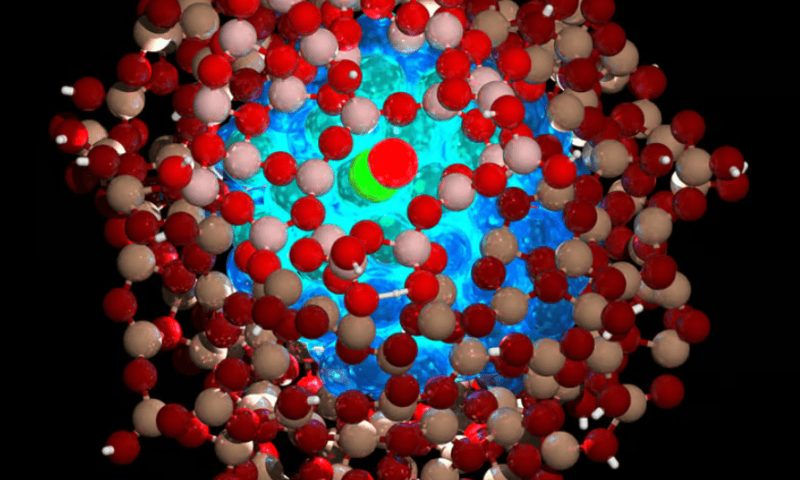In a development fit for a Marvel movie, researchers from the U.K.’s University of Nottingham claim to have developed what they describe as the first “quantum therapeutic”—electrically-charged gold nanoparticles that trigger glioblastoma cells to kill themselves while leaving healthy cells intact. The scientists have filed a patent for the tech and believe it could eventually be sprayed on the brain during surgery.
“This research has shown the possibilities presented by quantum therapeutics as a new technology to communicate with biology,” researcher Ruman Rahman, Ph.D., said in a press release. “The fusion of quantum bioelectronics and medicine brings us one step closer to a new treatment paradigm for disease.”
The scientists described the particles and their cancer-killing properties in an article published Sept. 14 in Nature Nanotechnology. Their approach is rooted in bioelectricity, or electrical signals between and within cells that control their function. A textbook example of this is photosynthesis, during which electrons are passed between two photosystems—light-absorbing protein complexes found in plants—to generate energy.
“The analogy I often use is to think of a cell as a network of interconnected circuits within a house. Just like when a fuse blows in a house and the lights go off due to the interruption of the current flow, a similar principle applies in biology,” study lead Frankie Rawson, Ph.D., told Fierce Biotech Research via email. “Controlling or halting the flow of ‘current’ through switches regulates various biological functions.”
Such circuitry is ubiquitous throughout the body, regulating processes from development to cancer formation. Its role in the latter has led to the development of devices that work via alternating electrical fields, also known as tumor treating fields, or TTF. Optune, a wearable device made by Novocure, is a TTF therapy that has been FDA-approved for treating glioblastoma multiforme.
But the TTF generated by Optune don’t actually kill glioblastoma cells—they just slow down the rate at which they proliferate. And while researchers have theorized about the potential of remote-controlled systems to alter electrical signals to actually stimulate apoptosis in cancer cells, the technology to do so didn’t exist.
Until now, perhaps. The Nottingham researchers created particles that they dubbed “bio-nanoantennae”, nano-sized gold electrodes coated with molecules that convert electricity from an external source into signals that cells can understand. The molecules are taken up into the cells via a transport process called endocytosis. Then, a current is supplied to the bio-nanoantennae through a feeder electrode, which polarizes them.
It is here that we enter the quantum realm: The application of the current causes what’s known as “quantum biological electrical tunneling,” a term for a phenomenon where electrons “tunnel” through energy barriers that, according to the laws of classical physics, they should not be able to overcome, Rawson explained. As a result, the cell’s behavior changes.
To determine how much electrical input it would take to trigger apoptosis in the glioblastoma cells while leaving healthy ones alone, Rawson’s team looked closely at their electrical characteristics. Cancer cells’ electrical properties are distinct in several ways from non-cancerous cells, such as having an elevated flow of electrical currents into their surroundings and a depolarized membrane voltage, which helps them rapidly proliferate.
After figuring out how much current would be required to turn on apoptotic genes in glioblastoma cells, the researchers took some derived from patients and cultured them with the bio-nanoantannae, then used an electrode to polarize them. This led to electron tunneling, which altered the cancer cells’ gene expression patterns and stimulated apoptosis. Transcriptomics—a technique to quantify gene expression—showed that the particles had indeed turned on apoptotic genes in the glioblastoma cells, killing them.
To confirm that the bioantennae wouldn’t induce apoptosis in healthy cells, the researchers cultured them with normal human astrocytes, a type of brain cell. Separately, they cultured them with liver bile duct cells, too. The particles had no effect on either cell type.
In addition to filing a patent, the research team has received funding from the U.K.’s Medical Research Council to progress its work. They envision the particles being activated by devices like implanted deep brain stimulators used to treat Parkinson’s disease, tailored so that the electrical output matches the condition they’re treating.

